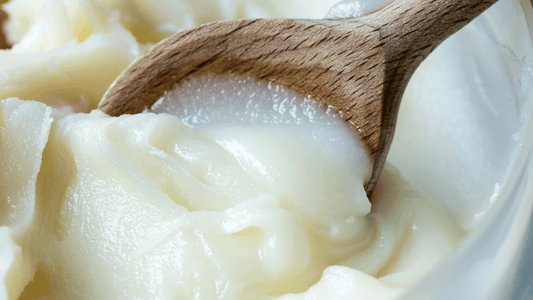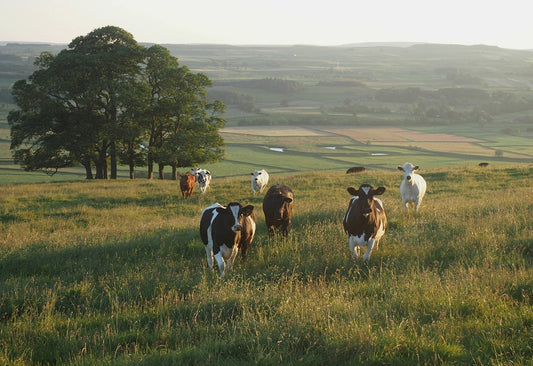
Does Beef Tallow Go Bad?
Share
Does Beef Tallow Go Bad? A Skincare Perspective
Beef tallow has surged in popularity as a natural skincare ingredient, prized for its rich nutrients and skin-nourishing properties. From balms to creams, it’s a staple in many routines, especially for those seeking clean, minimalist products. But a question often arises: does beef tallow go bad? Whether you’re a DIY skincare enthusiast or a fan of tallow-based products, understanding its shelf life is key to getting the most out of this powerhouse ingredient. In this blog post, we’ll dive into the factors that affect tallow’s longevity, how to store it for skincare use, and what to watch for to ensure it stays fresh.
Curious about premium tallow skincare? Check out Phat Skin Co. at www.phatskinco.com for expertly crafted options that harness beef tallow’s benefits.
Does Beef Tallow Go Bad? Understanding Its Shelf Life
So, does beef tallow go bad? The short answer is yes—but not as quickly as you might think. Beef tallow, rendered fat from cattle, is remarkably stable due to its high saturated fat content (around 50-55%), including palmitic and stearic acids. These fats resist oxidation better than unsaturated fats, giving tallow a natural resilience against spoilage. In its pure form, unopened and properly stored, beef tallow can last up to a year at room temperature or longer in the fridge.
For skincare, however, the equation changes slightly. When used raw or mixed into balms with minimal additives, tallow retains its longevity. Its vitamins (A, D, E, K) and fatty acids—perfect for hydrating dry skin or soothing irritation—stay potent over time if conditions are right. But introduce water, essential oils, or improper storage, and the shelf life can shrink. Unlike synthetic creams with preservatives, pure tallow relies on its natural makeup to stay fresh, making storage critical.
Historically, tallow was a go-to for everything from soap-making to salves, often lasting months without refrigeration. Today, brands like Phat Skin Co. refine this tradition, offering tallow-based skincare that’s both effective and stable—explore their range at www.phatskinco.com.
Does Beef Tallow Go Bad? Factors That Affect Its Freshness
To answer does beef tallow go bad?, we need to look at what can compromise it, especially in skincare applications. Here are the key factors:
- Exposure to Air: Oxidation is tallow’s main enemy. Once exposed to oxygen, its unsaturated fats (like oleic acid) can slowly break down, leading to rancidity. This process is gradual, but airtight containers are a must.
- Heat: High temperatures accelerate fat breakdown. Storing tallow above 75°F (24°C) can shorten its life, making cool, dark places ideal for skincare products.
- Moisture: Water introduces the risk of mold or bacteria, especially in DIY tallow balms. Pure tallow has no water content, but contamination from wet hands or tools can spoil it.
- Additives: Essential oils or plant extracts in tallow skincare can reduce shelf life if they’re prone to spoiling. High-quality, minimal formulations fare best.
- Source Quality: Grass-fed beef tallow, richer in nutrients, often lasts longer than grain-fed due to its antioxidant content, like vitamin E.
Signs of spoilage include a rancid smell (think sour or off-putting), discoloration (yellowing or browning), or a gritty texture. If your tallow skincare product shows these, it’s time to toss it. Properly stored, though, does beef tallow go bad? Not for a while—think 12-18 months or more.
Does Beef Tallow Go Bad? How to Store It for Skincare
Since does beef tallow go bad? depends heavily on care, proper storage is non-negotiable for skincare use. Here’s how to keep it fresh:
- Room Temperature: In a sealed jar, away from heat and light, pure tallow can last a year. Ideal for small batches you use regularly.
- Refrigeration: For longer storage—up to two years—keep tallow in the fridge. It firms up but softens at room temp for easy application.
- Freezing: Need it to last indefinitely? Freeze tallow in small portions. It won’t lose its skin benefits, like moisturizing or barrier repair, even after thawing.
- Airtight Containers: Use glass jars with tight lids to minimize air exposure. Avoid plastic, which can leach chemicals into the fat.
- Clean Tools: When scooping tallow for balms or direct use, use a clean spatula—not your fingers—to prevent contamination.
For skincare, consistency matters. A rancid product won’t just smell bad; it could irritate sensitive skin. Phat Skin Co. takes the guesswork out with their tallow-based line, designed for longevity and efficacy—see more at www.phatskinco.com.
Benefits of Beef Tallow in Skincare and Why Freshness Matters
Why care if does beef tallow go bad? Because its skincare benefits—hydration, healing, and protection—depend on it staying fresh. Tallow’s fatty acids mimic the skin’s sebum, making it a natural moisturizer for dry, flaky, or eczema-prone skin. Its vitamins support cell repair and combat inflammation, while its occlusive nature locks in moisture without clogging pores.
Fresh tallow delivers these perks at peak potency. Rancid tallow, however, loses nutrient efficacy and may harbor free radicals, negating its advantages. For conditions like psoriasis or chapped hands, where barrier repair is key, only fresh tallow will do. Plus, its simplicity—no fillers or preservatives—appeals to clean beauty fans, but that purity demands vigilance.
Compared to commercial lotions, tallow’s sustainability (repurposing a byproduct) and cost-effectiveness (a little goes far) are bonuses. But to enjoy these, you can’t let it spoil. Brands like Phat Skin Co. prioritize quality sourcing and packaging to extend shelf life—check them out at www.phatskinco.com.
Tips to Maximize Tallow’s Lifespan in Skincare
- Buy Small: Purchase or make tallow balms in amounts you’ll use within a year.
- Label Dates: Track when you opened or made your tallow to monitor freshness.
- Sniff Test: Trust your nose—if it smells off, it’s gone bad.
- Avoid Mixing: Adding water-based ingredients shortens shelf life; stick to oil-based blends.
Final Thoughts on Does Beef Tallow Go Bad?
So, does beef tallow go bad? Yes, eventually—but with proper care, it’s a durable skincare ally. Its stability, paired with unmatched nourishing properties, makes it a standout for natural beauty routines. Whether you’re slathering it on dry skin or crafting your own balms, understanding its shelf life ensures you reap the rewards without waste.
For top-tier tallow skincare that’s fresh and effective, look to Phat Skin Co. Their products showcase beef tallow’s potential, sourced and packaged with care. Visit www.phatskinco.com to explore their offerings and elevate your routine with this timeless ingredient.


